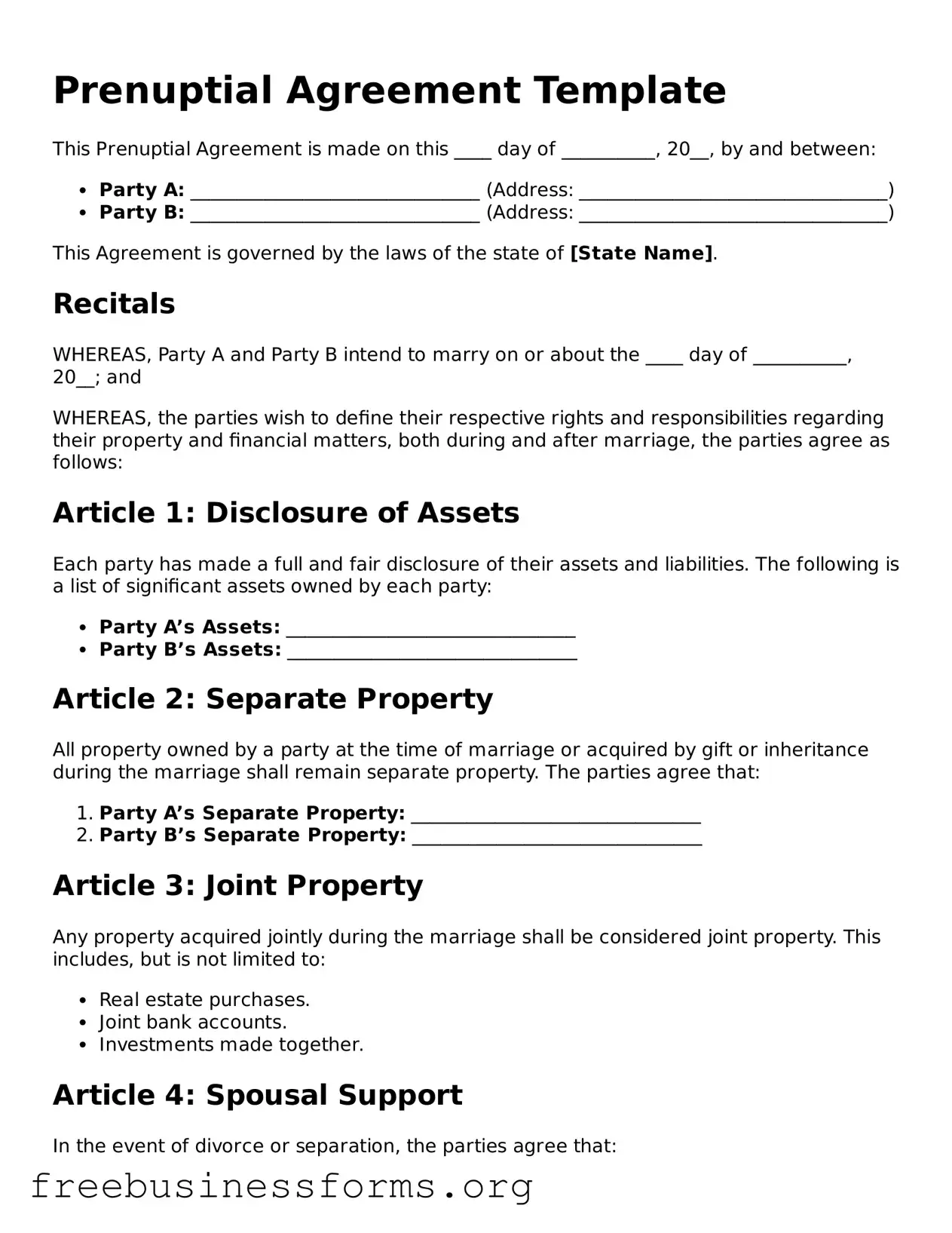Prenuptial Agreement Template
This Prenuptial Agreement is made on this ____ day of __________, 20__, by and between:
- Party A: _______________________________ (Address: _________________________________)
- Party B: _______________________________ (Address: _________________________________)
This Agreement is governed by the laws of the state of [State Name].
Recitals
WHEREAS, Party A and Party B intend to marry on or about the ____ day of __________, 20__; and
WHEREAS, the parties wish to define their respective rights and responsibilities regarding their property and financial matters, both during and after marriage, the parties agree as follows:
Article 1: Disclosure of Assets
Each party has made a full and fair disclosure of their assets and liabilities. The following is a list of significant assets owned by each party:
- Party A’s Assets: _______________________________
- Party B’s Assets: _______________________________
Article 2: Separate Property
All property owned by a party at the time of marriage or acquired by gift or inheritance during the marriage shall remain separate property. The parties agree that:
- Party A’s Separate Property: _______________________________
- Party B’s Separate Property: _______________________________
Article 3: Joint Property
Any property acquired jointly during the marriage shall be considered joint property. This includes, but is not limited to:
- Real estate purchases.
- Joint bank accounts.
- Investments made together.
Article 4: Spousal Support
In the event of divorce or separation, the parties agree that:
- Party A will pay: $_______________ per month.
- Party B will pay: $_______________ per month.
Article 5: Amendments
This Agreement may only be amended in writing and signed by both parties. No oral modification will be valid.
Article 6: Governing Law
This Agreement shall be governed by, and construed in accordance with, the laws of the state of [State Name].
Article 7: Severability
If any provision of this Agreement is found to be unenforceable, the remaining provisions shall still be valid and enforceable.
Signatures
IN WITNESS WHEREOF, the parties have executed this Prenuptial Agreement as of the date first above written.
Party A: _______________________________ Date: _______________
Party B: _______________________________ Date: _______________
Witness: _______________________________ Date: _______________
